Overview on AERB License
The Atomic Energy Regulatory Board, often known as the AERB, was established primarily to ensure that the use of radiation and nuclear energy for ionising in India did not compromise public health or the environment.
The Tarapur Atomic Energy Regulatory Board, also known as TAPS 1 & 2, and the Department of Atomic Energy (also known as DAE) formed the AERB in 1969 to create a safety committee for the establishment of the Station's first essential and subsequent Power Operations. The Design and Operations Review Committee was subsequently established as a separate, independent body to oversee the safety measures implemented by TAPS 1 & 2.
The Board's goal is to prevent excessive harm to human health and the environment from India's use of nuclear energy and ionising radiation. A full-time Chairman, an ex officio member, three part-time members, and a secretary make up the board at the moment.
Is an AERB certificate required?
To reduce the radiation effect for human safety, the AERB certification is required for importing machinery with radiation and manufacturing domestic medical diagnostic X-ray products.
Consequently, a producer will not be able to produce or import machinery that uses radiation in India without receiving AERB permission.
What is the AERB's purpose?
The purpose of AERB is to use nuclear energy and ionising radiation in India to reduce danger to human health and the environment. In a nutshell, the AERB's main goal is to limit the amount of radiation that is introduced to people.
As a result, AERB has been given the authority to implement laws and procedures to ensure radiography safety in India.
Enacted Laws and Rules for AERB
Concerns about the establishment and use of any nuclear facilities and the use of radioactive resources anywhere in India that are covered by the Atomic Energy Act of 1962 necessitated the enactment of specific acts. The Environmental Protection Act of 1986 governs issues pertaining to environmental security.
In India, numerous Acts and Regulations have been passed that regulate and grant authorization for the effective operation of AERB. The following is a list of the applicable laws and rules for AERB:
- Acts –
- The Environmental Protection Act, 1986
- The Civil Liability for Nuclear Damage Act, 2010
- The Atomic Energy Act, 1962
- The Amendments of Atomic Energy Act, 2015
- Regulations –
- The Atomic Energy Factories Rule, 1996
- The Atomic Energy Mines Minerals Prescribed Substance Rules, 1984
- The Atomic Energy Radiation Protection Rules, 2004
- The Atomic Energy Safe Disposal of Radioactive Waste Rules, 1987
- The Civil Liability for Nuclear Damage Rules, 2011
AERB-Regulated Activities and Facilities
The following list includes an overview as well as the key types of facilities and activities that the AERB regulates:
Nuclear Facility
The AERB has facilities for the governance of the Nuclear Fuel Cycles as well as for nuclear energy installations, which include water plants, beryllium extraction plants, zirconium plants, and other facilities related to the Nuclear Fuel Cycles.
Radiation Facility
The AERB is in charge of governing the installation of any necessary equipment or the use of radiation energy generating units, as well as the use of radioisotopes for research, industrial sector needs, medical needs, and agricultural needs.
Activities
The AERB's activities are offered for the governance of radioactive waste management across India and the regulation of the transportation of all radioactive substances.
The following facilities are listed as those that are governed by AERB:
- Industrial and R & D Facilities
- Nuclear Power Plants
- Nuclear Projects
- Operating Nuclear Fuel Cycle Facilities
- Radiation Facilities
Listed below are some of the activities offered that are governed by AERB:
- Transporting radioactive materials.
- Managing radioactive waste.
Required AERB Approval for Medical Devices
The following is a list of items that use or create radiation and need AERB approvals:
- Bone Mineral Density Machineries, also known as BMD
- C Arm or O Arm
- Cath Lab Machineries
- Computerised Tomography Scan Machineries, also known as CT Scan
- Cone Beam Computed Tomography Machineries, also known as CBCT
- Dental Orthopantogram Machineries, also known as OPG
- Dental X-Ray Machineries
- Digital Radiography Machineries, also known as DR
- Fixed X-Ray Machineries
- Fluoroscopy X-Ray Machineries
- Mammography Machineries
- Mobile X-Ray Machineries
- Portable X-Ray Machineries
Any more medical equipment that emit and use radiation Nuclear Energy
Prerequisite for X-ray equipment supply authorization
OEM Permission: Original Equipment Authorization, or OEM, is a certification indicating an auto body shop has been adhering to the prescribed repair guidelines. As a result, a provider is required to secure an OEC authorization for each piece of equipment they want to supply.
Conditions to Be Considered When Authorising a Supplier
- The equipment must be AERB authorised, according to the supplier.
- Lifetime servicing is required for diagnostic X-ray machinery.
- installation report submission to the designated entity in the designated format.
- The supplier must make sure that customers who are buying equipment have safety protection equipment like a protective apron, a protective barrier, etc.
- Must examine the customer site's design and enough shielding.
- On the customer's end, a provider must carry out equipment dismantling and decommissioning, including notifying AERB for additional action as required by the relevant department.
- must abide by all guidelines and requirements set forth by authorities.
Officer for Radiological Safety (RSO)
The person with the authority to utilise ionising radiation for medical treatments in a healthcare facility is known as an RSO. Therefore, having an RSO is a prerequisite if a Supplier has an internal radiating centre.
Radiation Testing Facility Requirements for Demonstration Type Approval
- There must be a test facility available.
- Protective gear must be used in the testing area.
- To ensure everyone's safety, limits must be set for anyone dealing with radiation.
- The testing location must be identified with a radiation symbol.
- For the purpose of preventing contamination, the proper precautions must be taken in or near the testing region.
Requirements to Meet Prior to Receiving an E-approval or NOC
- An authorised supplier needs to get approval.
- An equipment must get a Type Approval certificate from the relevant authority before selling.
- An approved supplier must import a prototype piece of x-ray equipment after receiving the NOC from the relevant government.
- Only if an item of equipment complies with the defined safety standards will a licence and NOC be granted.
- Once approval has been granted, each consignee's type-approved equipment will be imported on a regular basis.
- If the design of the equipment is altered in any way, a type approval will be deemed invalid.
Radiation Testing Facility Requirements for Demonstration Type Approval
- There must be a test facility available.
- Protective gear must be used in the testing area.
- Workers who use radiation must adhere to strict safety regulations, as must anybody else working in the test area.
- The testing location must be identified with a radiation symbol.
- For the purpose of preventing contamination, the proper precautions must be taken in or near the testing region.
- Staff that has been hired must get the AERB-required training.
Documents Necessary for AERB Approval
Following are the documents required for AERB Approval:
- Verification of the manufacturing facility's address.
- Information on the machinery.
- Proof of identity.
- Proof of employment.
- Obtain the X-ray equipment's Quality Assurance.
- Users of computed tomography and interventional radiology must obtain RSO approval before submitting.
- Equipment identification.
- Specifications for shielding and room arrangement.
- Authentic type approval replica enclosed with NOC.
- Radiation survey reports are available from authorised agencies and equipment suppliers.
AERB Registration Process
The AERB uses several regulatory processes to carry out its duties in a way that ensures the use of the Graded Approach. The following procedures are listed as the essential ones:
- Creating the necessary safety measures, together with rules for the users and the relevant utilities.
- Regulation of the Licensing Procedure for a variety of facilities and activities that are appropriate and adhere to the safety standards
- The rules governing inspections for compliance checks in line with the requirements of the relevant licence, as well as the upkeep of the necessary safety precautions.
Regulations for AERB Approval are enforced
The Atomic Energy Act of 1962 established a number of rules and restrictions, and the AERB has full authority to enforce those regulations and guarantee that the necessary steps are taken to maintain both industrial and radiological safety.
The provisions for the authorization of conducting an investigation, for sealing, for seizing Radiation Installations or any Radioactive Materials, and for giving the employer clear instructions for better and safe management are stated in accordance with Rule 31 of the Atomic Energy (Radiation Protection) Rules, 2004. An overview of the provided part is given below.
- Anyone has the authority to conduct investigations after completing inspections to identify any violations of the requirements specified, as per the authorization granted under Section 17 of the Atomic Energy Act of 1962.
- Any suspect or complaint, as well as any accident or strange incidence, may warrant conducting an investigation.
- Any sealing of a radiation installation, a radioactive substance, or anything that has been polluted by radiation-emitting radioactive substances are all subject to investigation by the authorised personnel.
- If the Authorized Personnel makes any recommendations for maintaining safety precautions, they can notify the Employer in writing, and the Licensee is required to abide by those recommendations.
It lists the offences and punishments in line with the AERB in accordance with Rule 35 of the Atomic Energy (Radiation Protection) Rules, 2004, as applicable. The Atomic Energy Act of 1962 applies to anyone who transgresses any of the provisions of the Atomic Energy (Radiation Protection) Rules, 2004, or the specified Terms and Conditions outlined in the issued License or AERB Approval.
Frequently Asked Questions
Regulatory Board for Atomic Energy.
The Atomic Energy Regulatory Board, also known as the AERB, is a regulatory body established for the purpose of overseeing nuclear facilities, radiation facilities, and activities. It also works to ensure that radioactive materials are not ionised or otherwise exposed to radiation in India in a way that endangers public health or the environment.
The Atomic Energy Act of 1962, which safeguards the maintenance of radiological safety in India, has mandated the strict implementation of norms and regulations. The administration of the rules outlined in the Factories Act of 1948 in regard to the upkeep of industrial safety for the units under the Department of Atomic Energy as created by the AERB is also authorised by the AERB.
Acts used by the AERB for governance are listed below:
- Atomic Energy Act, 1962.
- Amendments of Atomic Energy Act, 2015.
- Environmental Protection Act, 1986.
- Civil Liability for Nuclear Damage Act, 2010.
The following are the primary practises that the AERB regulates:
- Creating the necessary safety measures, together with rules for the users and the relevant utilities.
- Regulation of the Licensing Procedure for a variety of facilities and activities that are appropriate and adhere to the safety standards
- The rules governing inspections for compliance checks in line with the requirements of the relevant licence, as well as the upkeep of the necessary safety precautions.


